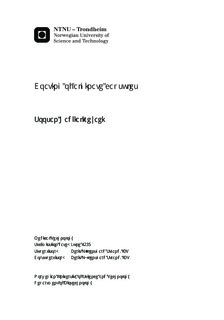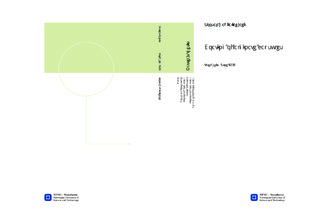| dc.description.abstract | Alginate is a popular candidate for encapsulation of cells due to the formation of gels with divalent ions under physiological conditions. Stable alginate gels can be formed by the selection of alginates with a high content of guluronic acid (G) and gelling in a mixture of calcium and barium. These alginate gels have been proposed as immune protective barriers for the transplantation of human pancreatic islets (insulin producing cells) for the treatment of type 1 diabetes where the alginate gel protects the transplant from the host immune system. Microencapsulation can thus provide a way to overcome the need for immunosuppressive drugs. Although showing promising results in animal models, there are potential limitations of the Ca2+/Ba2+-beads concerning growth of host cells on the surface of capsules in primate models. Development of coating strategies for alginate based capsules could thus be beneficial for reducing the attachment of host cells. Alginate microbeads/capsules were formed by electrostatic bead generator producing beads of 400µm. Afterward, the alginate beads were coated by fluoresceinamine labeled alginate that was visualized by confocal laser scanning microscopy (CLSM) and quantified by fluorescent spectroscopy. The binding of coating alginate to alginate-poly-L-lysine (PLL) capsules was also studied.In this project, in the optimalisation of coating of alginate beads some parameters were studies such as concentration of coating alginate, different gelling ions both for core and coating alginate, exposure time for gelling solution for fixation of coating layer and different washing solution.The long-term stability of coating layer of coated alginate beads was determined by measuring the fluorescent intensity of fluorescently labeled of coating alginate during a period of forty nine days. A stability study of alginate-alginate capsules revealed that Ca2+/Ba2+ alginate coated with high-G alginate and washed with saline and used Ca2+ and Ba2+ with ratio 50:1 for fixation of coating layer were more stable coating than other capsules. The alginate beads coated with high-M or epimerized alginate were produced. It shows higher intensity of coating layer in both capsules coated with high-M or epimerized alginate than alginate beads coated with high-G alginate. In continue of the study, the alginate-PLL capsules were coated with high-G, high-M, and epimerized and sulfated alginate. Alginate-PLL capsules coated with high-G, high-M and epimerized alginate shows no detective signal by confocal images and sulfated alginate coating shows some signal of coating. The stability of coating for alginate-PLL-alginate capsules and alginate beads coated with epimerized or high-M alginate revealed that both kind of coating have high-stability over one week screening.Three dimensional images of capsules, in confocal microscope, both epimerized and high-M coating alginates cover whole of capsules. However, in 3D images we have seen some fragment of coating gelling in the surround solution and attached to the capsules which can make disturbance in spectroscopy measurement. 3D images of alginate-PLL capsules coated with sulfated alginate show evenly distribution of coating. | nb_NO |

